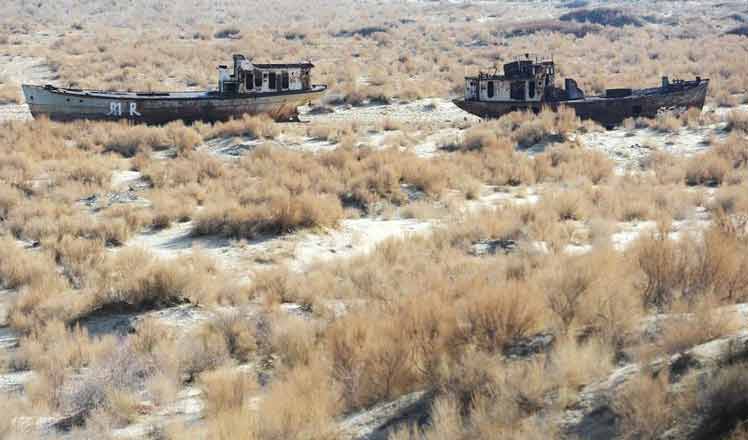Africa's road to a worldwide link-up
Initiative will open the door to international trade, and continent should make the most of its opportunities
A major international conference on the 21st Century Maritime Silk Road and the Silk Road Economic Belt, better known as part of the Belt and Road Initiative, is slated for May in Beijing. African policymakers, business executives and researchers shouldn't miss the opportunity that the conference presents. More important, African attendees should arrive with well thought-out, tangible proposals for their Chinese counterparts and interested parties from the rest of the world.
It is a no-brainer as to why Africa should sign up to the China-led Belt and Road Initiative, a global developmental plan proposed by Chinese President Xi Jinping and launched in 2013. For starters, China is the number one trading partner of the continent, so its overarching strategies are of great interest to Africans.
Through the Belt and Road Initiative, China is stepping up to the plate as a champion of economic globalization as parts of the developed world, ironically, step back from globally beneficial engagement. As a rule of thumb, Africa - a continent poorly connected to the rest of the world - needs to interact more with outside nations, not less. The economic globalization inherent in the Belt and Road Initiative portends the political, cultural and, crucially, economic integration of Africa into the global system.
With a whopping $4 trillion budget, extensive geographical reach and terrestrial and maritime dimensions, the Belt and Road Initiative promises to be a game changer for a world in need of innovative developmental approaches, Africa included.

In the four years since its establishment, the Belt and Road Initiative has gained traction, particularly in its Asia-Pacific and European dimensions. Although the African end of things is yet to be explicitly clarified, transient mention has been made of its link with the ancient East Africa-China Silk Road. Potential African linking ports for the initiative are the seaports of Djibouti, Mogadishu (Somalia), Lamu, Mombasa (Kenya), Tanga, Dar es Salaam (Tanzania), Maputo (Mozambique), Durban, Cape Town (South Africa) and Toamasina (Madagascar), among others. From these ports, the "silk road" can potentially make its way through the African hinterland via road, rail and aviation networks. This would greatly boost the African dream of increased connectivity.
The upshot would be that Africa enhances intra-continental trade, currently standing at a woeful 18 percent. The continent would also trade more with the world, improving on the current 2.4 percent exports to the rest of the world.
Rather than seeing the current amorphous status of the African dimension of the Belt and Road Initiative as a drawback, an opportunity arises for mining the opportunities it presents for Africa's development. Significantly, China is already involved in the development of seaports, roads and railways on the continent. Thus, the Belt and Road Initiative is in one way already under implementation on the continent.
A few examples suffice. The Belt and Road Initiative maps show the East African link in the port of Mombasa, with a rail line into Kenya and on to Uganda, Rwanda, Burundi and South Sudan. The recently inaugurated Addis Ababa-Djibouti railway could be extended from Ethiopia all the way to the West African coast.
Last month, President Xi Jinping and his Madagascan counterpart, Hery Rajaonarimampianina, reached an agreement on enhancing the Indian Ocean island's involvement in the Belt and Road Initiative. Many other examples abound to demonstrate that infrastructure projects underway underlie an explicit African Belt and Road policy.
Strategically located African countries can take the first step of approaching China to propose potential intersections in the initiative, rather than waiting to be co-opted. For instance, the ports of Mombasa, Lamu, Tanga and Dar es Salaam can serve as the entry points for the five-country East African Community (EAC) region. The ports of Dar es Salaam, Maputo and Durban are geographically strategic for linkages with the 15-member-state Southern Africa Development Community (SADC) region. The ports of Mogadishu and Djibouti are strategic for linkages with the Horn of Africa nations, Ethiopia, Sudan and Eritrea. The established regional economic communities of the EAC, SADC and the Intergovernmental Authority on Development (IGAD) have formal mechanisms of engagement with China, a fact that can be leveraged to draw in the benefits that Belt and Road portends.
In addition to individual countries and regional economic communities negotiating formal inclusion in the initiative, the African Union ought to be fully involved. China signed a memorandum of understanding for cross-continental infrastructure development with the African Union in January 2015. This followed a visit to the continent by Premier Li Keqiang in 2014, during which China pledged to support the continent's infrastructure connectivity.
A connecting thread can be seen in the fact that the African Union encompasses regional economic communities as the building block for the continent's integration. An AU-led agency can aid in connecting the eastern African regional infrastructure projects with the central and West African regions. Strategies can be crafted in such as a way that the Belt and Road Initiative infrastructure initiatives emanating from the EAC, SADC and IGAD are linked with the interests of the 11-country Economic Community of the Central African States and the 15-member Economic Community of West African States. In more or less the same version, the five-country Arab Maghreb Union would be linked via the Belt and Road route that connects the region through the Red Sea into Egypt and the Mediterranean Sea.
The author is a postdoctoral fellow at University of the Witwatersrand, South Africa. The views do not necessarily reflect those of China Daily.
(China Daily Africa Weekly 04/14/2017 page12)
















